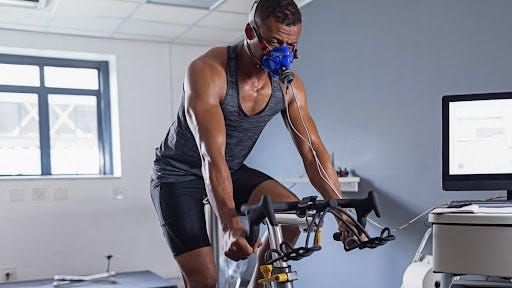The power of VO2 max!
If you’re serious about running, you've probably heard of VO2 max but what does it really mean, and how can you improve it? Whether you're training for your first 5K or aiming for a marathon PR, understanding VO2 max can be a game changer in unlocking your endurance potential.
VO2 max (or maximal oxygen uptake) is the maximum amount of oxygen your body can use during intense exercise. It’s measured in milliliters of oxygen per kilogram of body weight per minute (ml/kg/min). Simply put, it reflects your aerobic fitness of how efficiently your muscles use oxygen to sustain effort.
The higher your VO2 max, the more oxygen your body can deliver to your muscles, allowing you to run faster and longer before fatigue sets in. Elite marathoners have a VO2 max of 70+ ml/kg/min, while recreational runners typically fall in the 40-50 range.
VO2 max determines your ability to sustain high-intensity efforts. While it's not the only factor in endurance performance (lactate threshold and running economy also play key roles), it provides a solid foundation for improvement.
Increasing your VO2 max means:
Better endurance – You can maintain a faster pace with less fatigue.
Higher race potential – A stronger aerobic engine leads to PRs.
Improved recovery – More oxygen efficiency means faster post-run recovery.
VO2 max is partly genetic, but training plays a major role in improving it. Here are the best methods to boost your VO2 max:
High-Intensity Interval Training (HIIT) – Short bursts of max-effort running (e.g., 4-6 x 3-minute intervals at 90-95% max effort, with equal rest) push your cardiovascular system to adapt.
Tempo Runs – Running at a "comfortably hard" pace (~80-90% of your max heart rate) for 20-40 minutes improves oxygen efficiency.
Hill Repeats – Sprinting uphill for 30-60 seconds forces your heart and lungs to work harder, building strength and aerobic capacity.
Consistent Mileage – Regular aerobic training at moderate intensity (Zone 2 running) lays the foundation for a stronger VO2 max.
Strength Training – Stronger muscles improve running economy, allowing you to use oxygen more efficiently.
Many smartwatches (Garmin, Apple Watch, Coros) estimate VO2 max based on heart rate and pace data. While these numbers aren’t 100% accurate, they provide a useful benchmark to track progress. The most precise way to measure VO2 max is through a lab test with a mask and treadmill protocol but for most runners, smartwatch data is a good indicator.
VO2 max isn’t just for elite runners, every runner can benefit from improving it. By incorporating intervals, tempo runs, and consistent training, you’ll gradually increase your aerobic capacity and take your running to the next level.
Train smart, run strong :)


